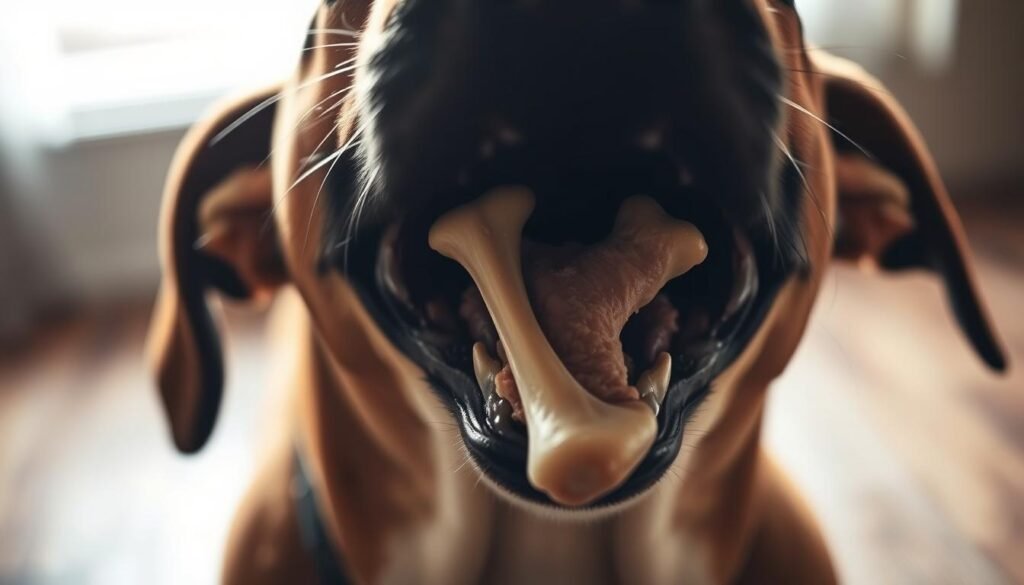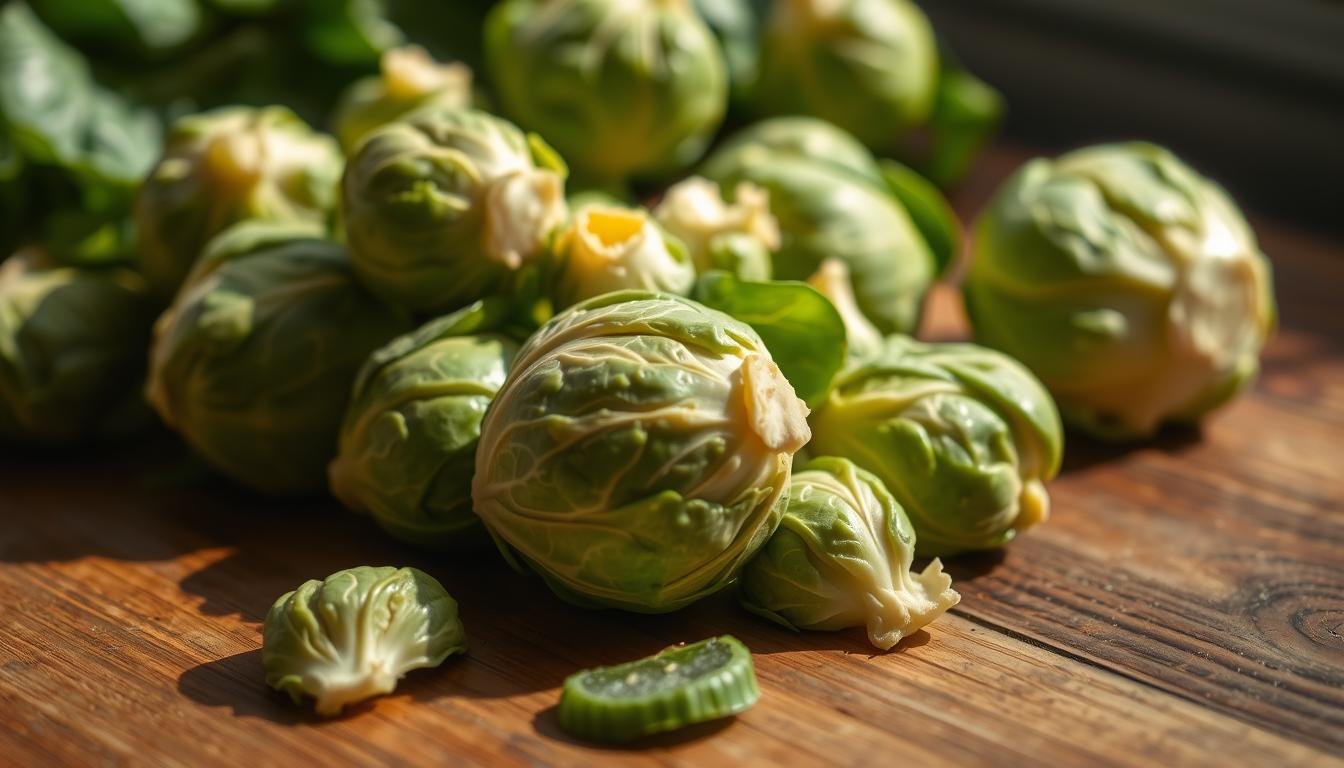Imagine this: your furry friend eagerly eyes the leftover chicken on your plate. You think, “Just one small piece won’t hurt.” But what seems like a harmless treat could turn into a dangerous situation. Many pet owners share this common misconception, believing that all bones are safe for their companions.
In reality, certain types, especially cooked chicken bones, pose significant risks. They can splinter easily, leading to choking, internal injuries, or even life-threatening conditions. Vets often warn against feeding these to pets, as emergency visits due to bone-related issues are all too common.
While the idea of giving a bone might seem natural, it’s crucial to understand the dangers. This article dives into the facts, helping you make informed decisions to keep your pet safe and healthy.
Key Takeaways
- Cooked chicken bones are brittle and can splinter, causing serious harm.
- Internal injuries and choking are common risks associated with bone consumption.
- Veterinarians strongly advise against feeding these to pets.
- Emergency vet visits due to bone ingestion are frequent and preventable.
- Understanding the risks helps ensure your pet’s safety and well-being.
Understanding the Problem
From cartoons to movies, bones are often shown as a dog’s favorite snack. This portrayal has led many to believe that bones are a natural and safe treat. However, the reality is far more complex and potentially dangerous.
The Appeal of Bones to Pets
Bones appeal to pets due to their instinctual desire to chew. Chewing helps clean their teeth and satisfies their natural urge to gnaw. Additionally, the flavor and texture make bones an enticing treat.
From a young age, pets are exposed to the idea that bones are a reward. This cultural portrayal reinforces the belief that bones are harmless. Yet, this instinct can lead to serious health issues.
Common Myths Versus Facts
Many myths surround the idea of feeding bones to pets. One common belief is that bones are a natural part of their diet. While this may have been true for wild ancestors, modern pets face different risks.
Another myth is that cooked bones are safer than raw ones. In reality, cooked bones are more likely to splinter, causing injuries to the mouth and throat. These sharp pieces can also lead to internal blockages or punctures.
| Myth | Fact |
|---|---|
| Bones are a natural treat for pets. | Bones can splinter and cause serious injuries. |
| Cooked bones are safer than raw bones. | Cooked bones are more brittle and dangerous. |
| Chewing bones strengthens teeth. | Bones can crack teeth and cause dental damage. |
Experts warn that even small pieces of bones can pose a significant risk. Vets often see cases where pets suffer from choking, blockages, or internal injuries after consuming bones. For safer alternatives, consider specially designed chew toys or natural chews like those suggested by Petful.
Can Dogs Have Chicken Bones? Safety Risks Exposed
Many pet owners wonder if it’s safe to share certain foods with their furry companions. When it comes to chicken bones, the answer is a resounding no. These bones are particularly hazardous and pose significant risks to your pet’s health.
Chicken bones are hollow and brittle, making them prone to splintering when chewed. These sharp fragments can cause severe damage to the stomach and intestines. Even if the bones break down partially, the harm may already be done, often requiring immediate emergency care.
One of the most dangerous outcomes is intestinal obstruction. Large pieces can block the digestive system, leading to critical conditions. Symptoms like vomiting, drooling, or retching are clear signs that something is wrong. If you notice these, seek veterinary help right away.
Statistics show that many vet visits are due to bone-related injuries. Cooked bones are especially risky, as they break into smaller, sharper pieces. These can puncture the esophagus or intestines, causing life-threatening complications.
| Risk | Consequence |
|---|---|
| Splintering | Internal injuries to the stomach and intestines |
| Obstruction | Blockage in the digestive system |
| Choking | Emergency situations requiring immediate care |
To ensure your pet’s safety, avoid giving them any type of bone. Instead, opt for safer alternatives like chew toys or vet-approved treats. Proper care and awareness can prevent unnecessary emergencies and keep your companion healthy.
Understanding the Health Risks

When it comes to pet safety, not all treats are created equal. Feeding your furry friend certain foods, like cooked chicken bones, can lead to severe health complications. These risks are often overlooked, but understanding them is crucial for keeping your pet safe.
Choking and Obstruction Hazards
One of the most immediate dangers is choking. Cooked chicken bones are brittle and can break into sharp pieces. These fragments can get stuck in the throat, blocking the airway and causing dog choking.
Even if the bone passes the throat, it can cause an obstruction in the digestive tract. This blockage prevents food from moving through the system, leading to severe discomfort and potential stomach issues. Symptoms like vomiting or difficulty defecating are clear signs of trouble.
Gastrointestinal Damage from Splintering
Cooked chicken bones are particularly hazardous because they splinter easily. These sharp pieces can puncture the esophagus, stomach, or intestines. Such injuries often require emergency surgery to repair.
Internal damage isn’t always obvious right away. Signs like lethargy, abdominal pain, or bloody stool may indicate a serious problem. If your pet shows these symptoms after eating chicken, seek veterinary care immediately.
Understanding these risks helps you make informed decisions about your pet’s diet. Avoiding harmful foods like cooked chicken bones is a simple step to ensure their long-term health and safety.
Immediate Actions When a Dog Eats Chicken Bones

Accidents happen, and sometimes pets get into things they shouldn’t. If your furry companion manages to eat chicken bones, staying calm is the first step. Panicking can create a stressful situation, making it harder to handle the issue effectively.
Safe Extraction Techniques
If your pet is still chewing on the bone, gently encourage them to drop it. Use a treat or a toy to distract them. Avoid pulling the bone out forcefully, as this could cause them to swallow it whole.
For smaller pieces, monitor your pet closely. Offering a small amount of soft food, like bread, may help protect the digestive tract. However, avoid inducing vomiting, as this can worsen throat injuries.
Recognizing Emergency Symptoms
Watch for signs that something is wrong. Symptoms like coughing, drooling, or gagging may indicate the bone is stuck. Other red flags include vomiting, lethargy, or difficulty defecating.
- Persistent coughing or gagging
- Excessive drooling or retching
- Signs of pain or discomfort
If you notice any of these, contact your vet immediately. Keeping emergency contact information handy ensures you’re prepared for any situation.
Prevention: Managing Bones and Kitchen Safety
Keeping your pet safe starts with smart kitchen habits. Accidents often happen when pets access food scraps or waste. By taking preventive steps, you can minimize the risk of your furry friend ingesting harmful items like chicken bones.
Proper Disposal of Chicken Carcasses
One of the simplest ways to prevent accidents is by securely disposing of chicken carcasses. Always place bones in a tightly sealed trash can or compost bin. Avoid leaving plates or bowls with scraps unattended, as pets can quickly snatch them.
During meal prep, keep countertops clean and free of food debris. Use a designated trash bag for bones and tie it securely before disposal. This ensures that your pet won’t be tempted to dig through the garbage.
Training Dogs to Drop Dangerous Items
Training your pet to drop unsafe items is another effective strategy. Start by teaching the “drop it” command using treats as positive reinforcement. Practice with safe objects first, gradually introducing scenarios with potential hazards.
Consistency is key. Reward your pet immediately when they obey the command. Over time, this training can prevent them from eating chicken bones or other dangerous items.
By combining proper disposal methods with effective training, you can create a safer environment for your pet. Prevention is always better than dealing with emergencies after they occur.
Conclusion
Chicken bones pose serious risks to pets, making them a dangerous choice for treats. Splintering is a major concern, as sharp fragments can cause internal injuries or blockages. Emergency symptoms like vomiting, lethargy, or difficulty breathing require immediate attention.
Prevention is key to keeping your furry friend safe. Securely dispose of bones and train your pet to avoid dangerous items. Staying proactive reduces the risk of accidents and ensures their well-being.
If an incident occurs, seek veterinary care promptly. For more guidance on handling such situations, visit this resource. Being informed and vigilant helps protect your pet from harm.





Does cooking chicken bones make them safer for dogs? The article didnt clarify this point. Can anyone shed some light?
Despite the risks explained, wouldnt the nutrients in chicken bones outweigh the dangers if theyre properly cooked and monitored?